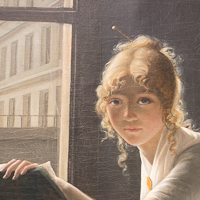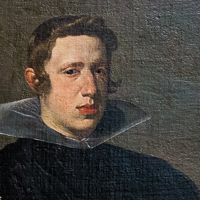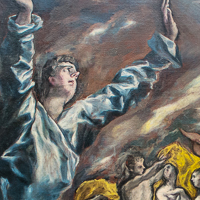
About the Collection
Climbing the Grand Staircase just beyond the entrance to the Met leads visitors back in time and across the ocean to the artistic world of pre-19th-century Europe. This gallery is the bridge between the Met's medieval collection at the Cloisters and the popular European galleries of the 19th and 20th century. This is the Renaissance collection. See it take hold in Italy and spread across Europe, with particular strength in Spain and the Netherlands. Some of the Met's most treasured pieces hang in this gallery. Even if your tastes tend towards the past few centuries, a visit here is necessary to understand the foundations of every artistic movement that followed.

What You Will See
This large wing contains over 40 rooms of paintings, some dating as far back as the 11th-century (older medieval art is on display to the Cloisters branch of the Metropolitan Museum of Art). The 600 years of art is divided into rough chronological and geographic groupings with thematic galleries focused on a given artist, region, style or subject. While some of the artists will be familiar to most visitors (Rembrandt, El Greco, Velasquez, Bruegel, Vermeer), most of the names are not as widely recognized as the nearby post-19th-century galleries. Find the iconic pieces of the collection, but also wander and discover a new favorite.

Why You Should Go
At the heart of the building and generously sprinkled with world-famous works, this collection is a common stop for visitors to the Museum and a standard stop on a museum highlights tour. But the collection deserves more exploration than simply the must-sees. This is one of the few collections in the world where you can watch the Renaissance happen. Start with the oldest rooms of medieval paintings--beautiful, but characterized by flat, idealized religious scenes. Then watch as artists slowly discover perspective, anatomy, and naturalism with hints towards impending moves to romanticism, realism, and impressionism. Thorough visitors deserve an honorary degree in Art History.




